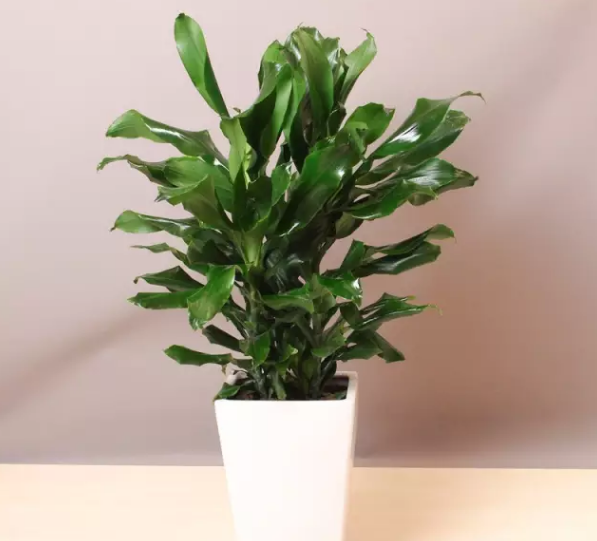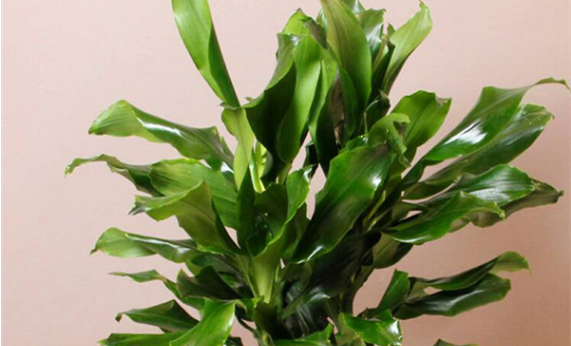Expired pills how to cultivate flowers can accelerate germination and root
When it comes to this expired pill, almost every family may have it, and this expired pill is also useful, but don't throw it around, how to grow flowers with expired pills:

1. Promoting rooting and promoting the survival rate of branches
4-6 days before grafting, spraying cuttings with aspirin to promote rooting can improve the survival rate of grafting. In flower cutting, watering or leaf spraying with this solution can prevent cutting cut rot and improve the survival rate of cutting.
Dosage: one tablet (0.05g) of aspirin, 1000 grams of water.
2. Accelerating germination to improve the survival rate of seeds.
Before sowing, many seeds need to be germinated, soaking the seeds with 0.05% aspirin solution for 2 to 3 hours. After sowing, the seedlings emerge quickly and evenly, and the seedlings are also strong, and can enhance and improve the drought resistance and disease resistance of the seedlings.
Dosage: one tablet (0.3g) aspirin with 500 grams of water.
3. Protect flowers and fruits and reduce bud drop
From flower buds to fruit expansion, spraying foliar water with 0.01% aspirin solution can reduce flower buds and prolong florescence.
Dosage: one tablet (0.1g) of aspirin, 1000 grams of water.
Warm reminder:
It is recommended that when using, be sure to dilute in place, properly reduce the concentration of aspirin before use. Don't be careful not to spray too often.
This is the end of the introduction about the method of growing flowers for expired pills. This expired pill can grow flowers, so come and try it as soon as possible.
Tips on sowing and cultivating flowers to promote budding
Bonsai Flower Network Guide: today, the editor of the Flower Bonsai Network is here to share with you an article on the tips of sowing and growing flowers. Let's take a look at it.
Many flower lovers like to cultivate flowers by sowing, watching the seeds germinate, grow and blossom, with a great sense of achievement! Today, I will teach you a few budding tips, and a few movements before sowing can help you sprout quickly and grow strong!
Soaking water to accelerate sprouting
Soak the seeds in water, change the water every day, and the soaking time varies depending on the seeds. Seeds such as rich trees and durian can sprout in one day. Most seeds need to be soaked for 3-7 days, and some seeds such as palms can be soaked for 30 days.
Paper towel budding method
Spread the seeds on a wet tissue, then put the tissue in a disposable lunch box or cover it with a film to create a small greenhouse environment. After that, keep the paper towels moist, and when the seeds grow white roots, you can put them on the pot.
Router budding method
Nowadays, many people have routers at home, which emit heat. Wrapping seeds in wet paper towels and putting small plastic bags on routers can also play a role in sprouting.
Breaking skin and promoting sprouting
For seeds with a very hard seed coat, such as water lily seeds, the seed coat should be cut in order to improve the seed germination rate.
Flower seeds are fastidious in accelerating budding.
Different kinds of flowers have different seed germination periods because of their different seed coat structure and physiological mechanism. for example, red, chrysanthemum and impatiens can germinate quickly as long as they are sown at the right time, while some flowers can germinate in months or even years. Therefore, human germination must be carried out to shorten the dormancy period of the seeds.
1. Water immersion treatment: for seeds with short dormancy period and easy germination, such as Bauhinia, Pearl Plum, Golden Belt, etc., soak the seeds in warm water ranging from 40 degrees Celsius to 60 degrees Celsius for 1 to 2 days, and then sow the seeds directly. Torch tree and other seeds, initially soaked in 90 degrees Celsius water, let it cool naturally for 24 hours, so that the gelatinous, waxy seed coat softened, absorbed water, and then germinated. However, it should be noted that when the seeds are treated by water immersion, the water should be changed frequently, and the time when the water temperature is higher than 60 degrees Celsius to 90 degrees Celsius should not exceed 0.5 to 1 hour, and then the water temperature should be reduced to less than 40 degrees Celsius, otherwise the seed embryo is easy to die.
2. Low temperature treatment: some flower seeds, such as Rosa roxburghii, Chimonanthus praecox, Forsythia suspensa, cloves and some herbal flowers sown in autumn, need to go through a fixed time of low temperature (0 degrees Celsius to 10 degrees Celsius) treatment, which can promote maturity and break the dormancy of seed embryos and germinate. The method is: mix the seeds with sand with a humidity of 60% (that is, squeeze them into a ball with your hands, release them and spread them out), then put the □ in a plastic bag, tie it tightly, put it in a flowerpot, and bury it in an open field 40 cm to 60 cm deep. You can also put the seeds in a refrigerator at 3 to 5 degrees Celsius for 60 to 90 days, and sow them in spring. It can also be sown in autumn so that the seeds can be naturally frozen outdoors in winter and germinated in the following spring.
3. Variable temperature treatment: some flower seeds, such as tassel, peony, peony, etc., have the habit of double dormancy of radicle and Hypocotyl, that is, the radicle (the part that develops into roots in the seed embryo) needs to break dormancy through a temperature stage of 25 degrees Celsius to 32 degrees Celsius for a period of 1 to 2 months or more, while the Hypocotyl needs to break dormancy for 1 to 3 months under the condition of 3 degrees Celsius to 5 degrees Celsius. For this kind of seeds, they must be mixed with wet sand before sowing, and then transferred to low temperature after a fixed time of high temperature. after variable temperature treatment, spring sowing can germinate quickly. However, attention must be paid to ensure the time of high temperature period and freezing period, otherwise it is still difficult for seeds to emerge after sowing.
- Prev

Propagation method of threaded iron watering once a few days
Striped iron, also known as willow iron, is a plant belonging to the tequila family. It is the most common indoor plant in our daily life at home or in the company. Its leaves are relatively large, green and generous, very dignified, and the price is not very expensive.
- Next

What leaves are yellow in the culture method of threaded iron?
Threaded iron, also known as willow iron, Philippine iron, curly leaf iron, twisted iron, is one of the cultivated varieties of the genus Liliaceae, is a tropical evergreen shrub. Threaded iron is an excellent plant cultivated indoors, but the leaves will turn yellow when it is cultured. So how to raise threaded iron in the end?
Related
- Fuxing push coffee new agricultural production and marketing class: lack of small-scale processing plants
- Jujube rice field leisure farm deep ploughing Yilan for five years to create a space for organic food and play
- Nongyu Farm-A trial of organic papaya for brave women with advanced technology
- Four points for attention in the prevention and control of diseases and insect pests of edible fungi
- How to add nutrient solution to Edible Fungi
- Is there any good way to control edible fungus mites?
- Open Inoculation Technology of Edible Fungi
- Is there any clever way to use fertilizer for edible fungus in winter?
- What agents are used to kill the pathogens of edible fungi in the mushroom shed?
- Rapid drying of Edible Fungi

